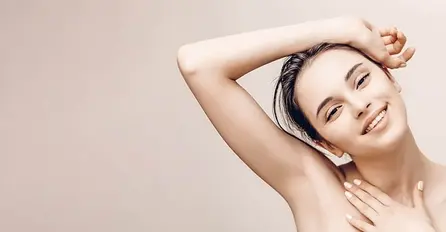Understanding Botox
Botox is one of the most recognised names in modern aesthetic medicine. It is widely used across the world for both cosmetic and medical reasons. The term Botox is actually a brand name for a substance called botulinum toxin type A, which is produced by a bacterium named *Clostridium botulinum*. While the word toxin might sound concerning, the amount used in clinical and aesthetic settings is highly controlled, purified and safe when administered by trained professionals.When injected in very small amounts, Botox temporarily relaxes targeted muscles. This relaxation reduces the appearance of lines and wrinkles caused by repeated facial expressions such as smiling or frowning. It has been used in medicine for several decades and is supported by extensive scientific research and safety data.
How Botox Works
To understand Botox, it helps to look at how facial muscles create movement. When we make expressions, our brain sends signals through nerves that release a chemical called acetylcholine. This chemical tells muscles to contract. Botox blocks the release of this chemical for a limited time, preventing those specific muscles from tightening. The effect is localised, meaning it only works where it is injected. The muscle temporarily relaxes, softening lines on the surface of the skin. This does not affect the sensation of the skin or the ability to make natural expressions, especially when performed carefully by a skilled practitioner. Over time, as the nerve endings recover, the effect gradually fades.Common Cosmetic Uses of Botox
Botox is most well known for reducing facial wrinkles. The most commonly treated areas include:- Forehead lines – Horizontal lines that form when raising the eyebrows.
- Frown lines – Vertical lines between the eyebrows that appear when frowning or concentrating.
- Crow’s feet – Fine lines at the outer corners of the eyes that appear when smiling or squinting.
- Bunny lines – Small lines on the upper sides of the nose when scrunching the face.
- Chin dimpling – Uneven texture on the chin caused by muscle tension.
- Jawline slimming – When used on the masseter muscles, Botox can reduce the appearance of a wide jaw.
- Neck bands – Relaxing the platysma muscle can soften vertical neck lines.
Medical Applications of Botox
Although most people associate Botox with aesthetics, it was first used in medical practice. Today, it plays an important role in various medical treatments. Some of its recognised uses include:- Chronic migraine relief – Botox can reduce the frequency and severity of migraine headaches when injected in specific areas of the head and neck.
- Excessive sweating (hyperhidrosis) – It helps control excessive sweating in the underarms, hands, feet and face by blocking the chemical signals that activate sweat glands.
- Muscle spasms and stiffness – Used in conditions such as cervical dystonia or cerebral palsy, it helps reduce involuntary muscle contractions.
- Overactive bladder – Botox can help relax the bladder muscle to reduce sudden urges to urinate.
- Eye conditions – It is also used to treat crossed eyes and eyelid twitching.
What to Expect During a Botox Procedure
A typical Botox session is straightforward and usually takes less than 30 minutes. The process generally involves:- Consultation – The practitioner discusses your goals, examines your facial structure, and explains how Botox works for your specific concerns.
- Preparation – The treatment area is cleaned. No anaesthesia is usually needed, though some clinics may apply a topical numbing cream for comfort.
- Injection – Using a fine needle, small amounts of Botox are injected into the targeted muscles. Most people describe the sensation as a quick pinprick.
- Aftercare – You can return to normal activities almost immediately. It is generally advised to avoid rubbing or massaging the treated area for a few hours.
Who Can Get Botox?
Botox is suitable for most adults who wish to soften the appearance of dynamic wrinkles – those caused by facial movement. However, it may not be suitable for everyone. People who are pregnant, breastfeeding, or have certain neurological conditions are usually advised to avoid it. A proper consultation with a qualified clinician is essential to ensure safety and suitability.Safety and Possible Side Effects
When performed by trained professionals, Botox is considered very safe. Like all medical treatments, some mild side effects may occur, such as:- Slight redness or swelling at the injection site
- Minor bruising or tenderness
- Temporary headache
- Subtle asymmetry if muscles respond differently
Addressing Common Myths About Botox
There are several misconceptions about Botox. Below are some of the most frequent ones, along with the facts:- Myth: Botox freezes the face completely.
Fact: When applied correctly, Botox relaxes muscles only enough to soften lines without stopping natural expression. - Myth: It is unsafe or toxic.
Fact: Botox has been used safely in medicine for over 30 years with extensive research supporting its safety profile. - Myth: Once you start, you must keep getting it forever.
Fact: If you stop, your muscles simply return to normal function and lines gradually reappear, no worse than before. - Myth: Botox and fillers are the same.
Fact: Botox relaxes muscles to reduce movement lines, while fillers add volume to shape and contour the face. - Myth: Botox is only for women.
Fact: Many men also use Botox to achieve a refreshed and natural look. The treatment works equally well for both genders.
Aftercare and Recovery
Recovery after Botox treatment is minimal. Most people continue with their usual daily activities straight away. To ensure the best results, clinicians often recommend:- Avoid rubbing or applying pressure to the treated area for 24 hours
- Keep upright for a few hours after treatment
- Avoid strenuous exercise, saunas and very hot showers for a day
- Refrain from alcohol on the day of treatment


